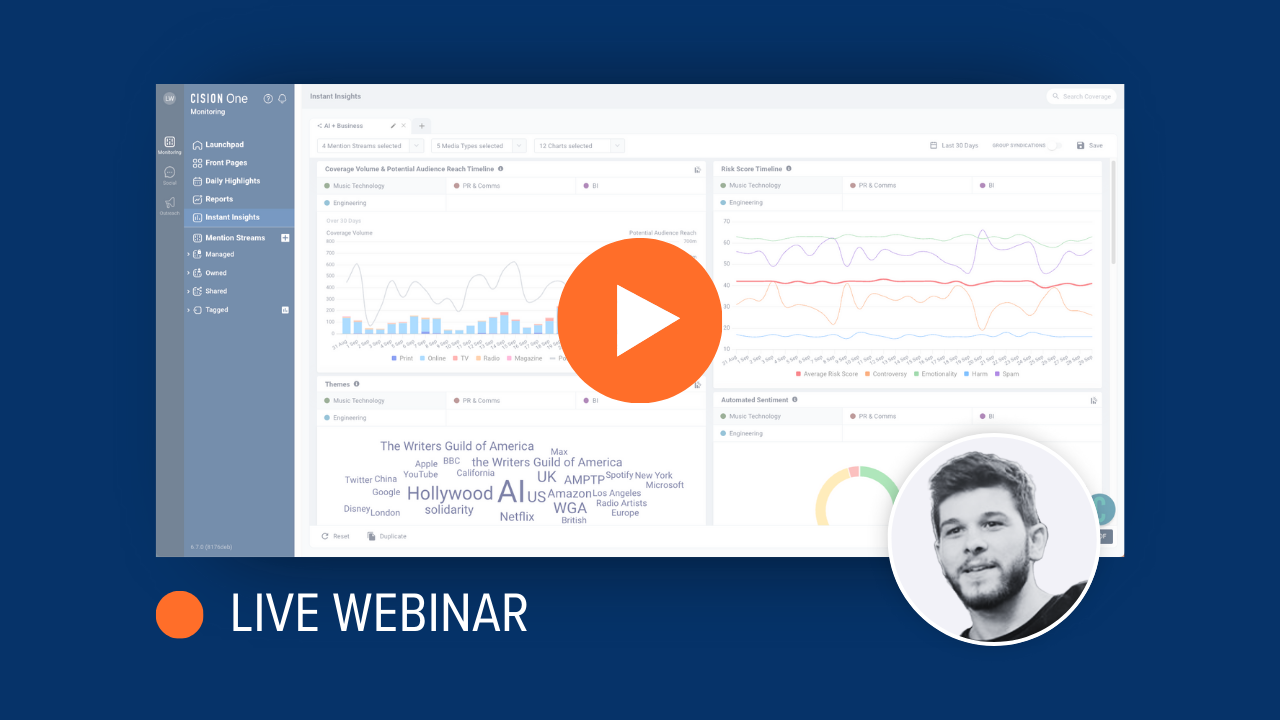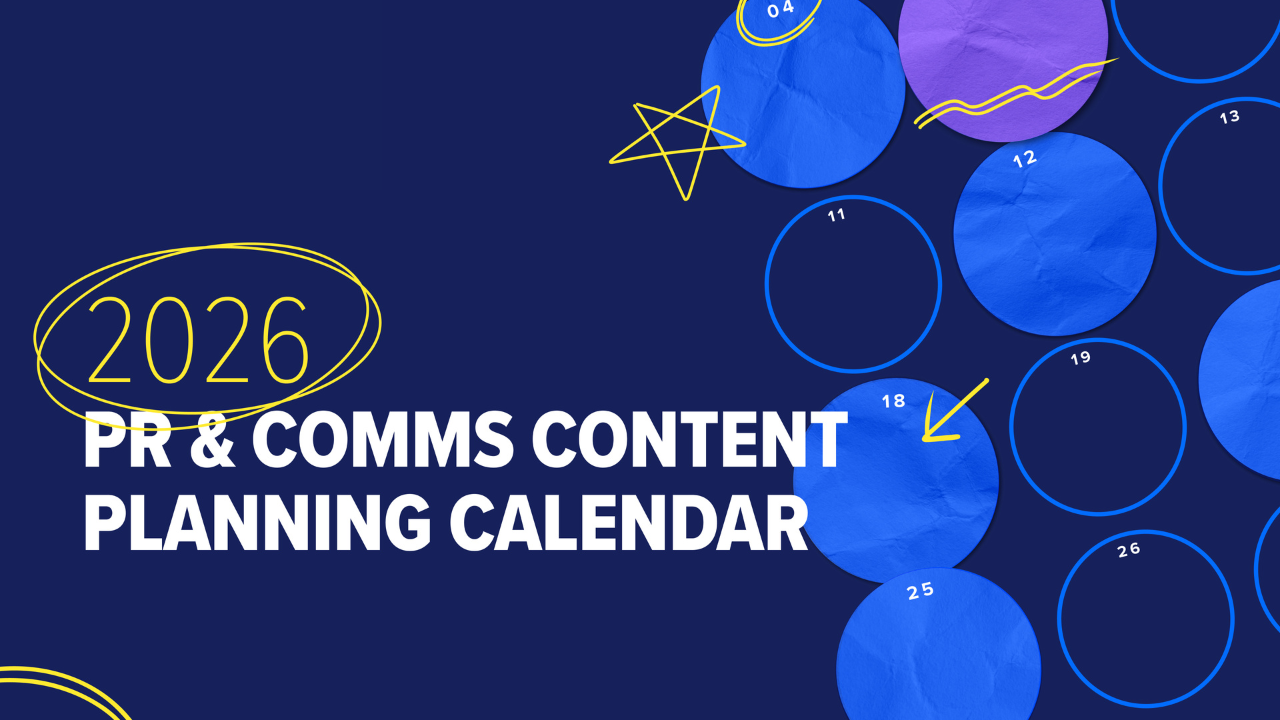There’s nothing more valuable to PR pros than earned media coverage, but securing it requires thinking ahead about where you want your story to land. Even if you have a rock-solid pitch, if it doesn’t speak to the needs of the journalists you’re pitching, their audiences, and – not least of all – the different media outlets they work for, it’s going to be an uphill task to drive coverage.
Different types of media require different pitching styles, and if you work for a brand or PR agency looking to get your message out to a broad audience, it pays to know what journalists across every kind of platform truly value.
Backed by the 2025 State of the Media Report, our survey of more than 3,000 reporters worldwide, we split the responses by outlet type to get a clearer picture of what editorial teams want across different media outlets, whether they work for print, digital, or broadcast.
Website Pitching: Digital-First Media Outlets
Journalists writing for online outlets can publish faster than their print counterparts and even update ongoing stories. They’re looser on deadlines, but they do operate in an over-saturated online space where content is consumed quickly, and readers may have several publications to choose from, even in niche areas.
Here’s what the State of the Media Report reveals about website journalists and their pitching preferences:
- 80% of website journalists would block a PR pro if they spammed them with irrelevant pitches
- One of the top ways PR pros provide for website journalists is by connecting them with relevant sources (cited by 65%) or facilitating access to people or places (58%)
- 59% of website journalists rarely or never engage with PR professionals on social media
- 97% say the best way to get in touch with them is via email
Website journalists can see how their stories are performing in near-real time. Consequently, they’re seeking stories that will drive traffic and engagement, so your pitch should clearly explain why a digital audience will care about your story.
The web’s immediacy means online journalists publish regularly, so timely, newsworthy content that capitalizes on current trends will appeal to them. Your pitch should focus on relevance, with a compelling hook and imagery. Plus, an idea of the story's SEO potential and how it will reach a wider audience will only help it stand out in a crowded inbox.
Magazine Pitching: Thinking About Lead Times
The crucial thing to remember when pitching media outlets like magazines is that journalists are working on stories weeks, sometimes months, ahead of publication. A monthly magazine is likely planning Christmas coverage as early as June, so PR pros need to think ahead and make sure seasonal or holiday-themed editorial ideas get in front of journalists in time for their print deadlines.
Here are some more magazine journalist pitching statistics we gleaned from the State of the Media Report:
- 87% say they will reject a pitch because it lacks relevancy to their audience or beat
- 80% have used an image provided to them by a PR pro or agency in the last year
- 67% say PR pros provide value by connecting them with relevant sources
It’s clear that magazine journalists place a high value on relevance and good sources when looking at stories. Plus, visuals are essential as they lay out pages, so when possible, include links to high-res images in your pitch, and explain how they help tell your story.
Also of note: 30% of magazine reporters we surveyed identified as freelancers. Pinpointing the outlets to which freelance journalists contribute may also provide another route to securing coverage.
Newspaper Pitching: Speed and Local Connections
Newspaper journalists must contend with the demands of daily news cycles and tight publication deadlines. Many are also local reporters, serving their communities with important stories. In fact, one of the biggest journalist bugbears we found in the State of the Media Report was pitches that had no relevance to their local audience.
Further, the following stats around pitching newspaper journalists shed light on what they’re looking for from their PR partners.
- 75% of newspaper journalists said the content they most want from PR contacts is news announcements or press releases
- 56% said an ideal pitch should include compelling data or statistics
- 81% would block a PR pro if they spammed them with irrelevant pitches
- 50% are opposed to receiving AI-generated pitches or press releases (34% said “strongly opposed,” 26% “somewhat opposed”), and 75% said they are concerned about factual errors in PR-provided AI content
Including a good press release with a clear hook and data to back up the story can help unlock coverage, but being able to hit a deadline is a major factor in getting a newspaper story to print.
In fact, 67% of journalists indicated that they get pitches they’d like to cover but can’t due to time or resource constraints. PR pros who are responsive to newspaper journalists and whose pitch promises them the assets they need to write a story to deadline stand a better chance of winning coverage.
Newsletter Pitching: Standing Out in a Crowded Inbox
Newsletters are an increasingly popular platform for journalists to build an audience – be that as part of an existing media organization (think The New York Times’s suite of newsletters) or independently. In fact, our survey found that more than 1 in 10 journalists now identify newsletters as their primary work outlet. (“Primary” is the key word here, as the number working for newsletters as a secondary work outlet may be far greater.)
With loyal subscriber bases, regular publishing schedules, and bite-size content that can fit into a digestible email, newsletters offer PR pros a unique avenue to reach an audience. Here’s some State of the Media insight into newsletters journalists’ pitching preferences:
- 75% of newsletter journalists said they used images supplied by PR pros in the last year
- Their ideal pitch length is 100-200 words – the shorter the better
- 66% said PR pros provide value by connecting them with relevant sources
- Compelling data and statistics are in demand: 62% said their ideal pitch should include this
- 84% will reject a pitch if it isn’t relevant to their audience or beat
Many successful newsletters target a specific niche or topic, building up a dedicated audience who all share a similar interest. Think Matt Navarra’s Geekout for the latest social media news or The Rundown AI for all things AI. For PR pros, this means they can look for popular newsletters within their sector and tailor relevant pitches accordingly.
Another quick tip: Newsletter journalists only have an email subject line to “sell” a story to their audience, so think about how to communicate your ideas in the most succinct way possible in your pitch.
Social Media Pitching: The Right Content for the Right Platform
Not only are major news outlets creating native content for social media, but many journalists now use these channels as publishing platforms, too. We’ve gone into depth on how journalists use social media in this feature, which highlights the need to understand platform-specific content formats and best practices. For example, a story with a strong visual element is more likely to suit Instagram, while data-heavy thought leadership is an easier fit for LinkedIn.
Other insight from social media-first journalists from the State of the Media Report includes:
- 70% of social media journalists said they included images supplied to them by PR pros in the last year
- Other multimedia assets sought for social media stories are data visualizations or infographics (40%) and videos (34%)
- Though email is their preferred method to receive pitches, 21% said they would happily take a pitch via social media DM (compared to just 7% of newspaper journalists)
- How do social media journalists actually use social? 74% say to publish or promote content, 69% to interact their audiences, and 54% to crowdsource information for stories
Social media trends can move quickly, so a pitch with these platforms in mind needs to be sufficiently “of the moment” to capture an audience’s attention. Any pitch with compelling multimedia assets and a strong grasp of the personalities and nuances of each platform stands a good chance of being considered for coverage.
Moreover, social media feeds (both for media outlets and individual journalists) can offer insight into the types of stories a specific reporter might cover. It can also be where journalists go to find sources for their stories, so it’s always worth tapping into social listening to uncover the topics and themes resonating in the industry they cover.
Radio and Podcast Pitching: Understanding Audio-First
Radio and podcasting’s audio-first storytelling is entirely different from journalism that’s built on the written word. A talk-, news-, or interview-based show format offers scope to put your brand into an environment with an engaged listenership.
Looking at the data from our State of the Media Report, radio and podcast journalists show heightened interest in...
- Interviews with industry experts – 47% say this is the kind of content they want from their PR partners
- Lack of audience relevance is the biggest buzzkill for a pitch – 86% said this was a reason to reject a PR approach
- 63% want to be connected to relevant sources
- 61% want PRs to help facilitate access to key people or places
Supplementing your pitch with a spokesperson available for interview is a good way to attract the attention of audio journalists. However, ensure that brand representative has gone through media training and is aware of the theme and style of the show.
Quick tip: Your pitch will be far more effective if you position your spokesperson as someone who can bring value to a conversation around a topic that really matters to the outlet’s specific audience (as opposed to pushing an advertisement for your brand’s product or service). For a deeper dive into audio, check out our guide to podcasting and PR.
TV Pitching: On-Screen Impact
Television journalism requires stories that translate well to the screen with strong visual elements and media-trained spokespeople. TV journalists need PR partners who understand broadcast requirements and can deliver compelling visual assets that bring these stories to life.
These visuals often determine whether a pitch makes it to air, so B-roll footage, professional video content, and access to key locations or people are crucial elements.
Here's what our State of the Media Report reveals about TV journalist preferences:
- 75% of TV journalists said news announcements/press releases
- 65% want PR pros to facilitate access to key people or places
- 58% have included images supplied by PR pros, while 41% have included videos
TV journalists work with tight production schedules and need quick turnarounds on visual assets. Your pitch should emphasize exclusive opportunities (like behind-the-scenes access) and spokespeople with an engaging on-camera presence.
Having professional-quality multimedia assets ready and conveying how your story fits current news cycles will also significantly improve your chances of securing coverage.
How to Pitch a Story to the Media: The Bottom Line
There are more ways than ever for PR professionals to reach audiences. However, as our State of the Media Report reinforces, understanding different media outlets and adapting your approach with different pitching styles remains key to successful media relations. A print journalist's requirements differ drastically from a podcast creator, and your approach must reflect (and respect) these nuances.
Modern PR professionals who want to master how to pitch a story to the media can leverage comprehensive media databases like CisionOne Outreach to optimize their targeting, ensuring pitches reach the right journalists with personalized messaging that resonates. These tools enhance your ability to deliver relevant, timely content that serves both journalist needs and audience interests.
Ultimately, good media outreach comes down to treating each media format as unique, understanding journalist pitching preferences, and bringing them stories that will engage their audiences.
Find out how CisionOne Outreach can help you connect you with the right journalists across different media outlets, speak with one of our experts.
Most Recent Posts
Cision Resources
-
E-books and Guides
Comprehensive how-to guides on strategy and tactics
-
Case Studies
What are other brands doing – and how can we learn from them?
About Simon Reynolds
Simon is the Senior Content Marketing Manager at Cision. He worked as a journalist for more than a decade, writing on staff and freelance for Hearst, Dennis, Future and Autovia titles before joining Cision in 2022.
Learn More. Do More. demo new
PR Tips, Case Studies, and Product Updates

[On-Demand Webinar] The Next Generation of Media Intelligence: From Gorkana to CisionOne
Explore CisionOne, a revolutionary media intelligence platform, and the evolution of Gorkana. Learn key features and strategies from Luke Williams, CisionOne Product Marketing Manager. Elevate your media outreach to new heights!


